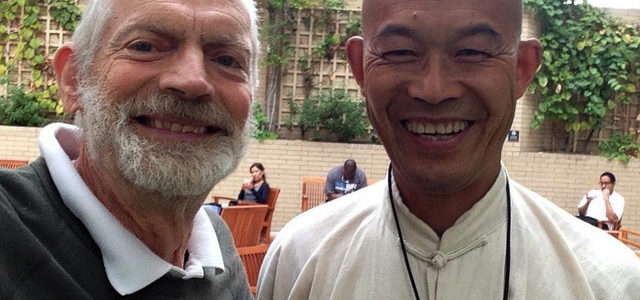About Grand Master Tang Wei Zhong
Grand Master Tang Wei-Zhong has practiced Buddhist Qi Gong and Martial Arts for over 40 years. He is a former member of the World Qi Gong Healing Association and he is a former Qi Gong Tui Na healer at the Shanghai Qi Gong Rehabilitation Center in Shanghai, China.
In 1988, Grand Master Tang was invited to Japan to teach Buddhist Qi Gong and Martial Arts to several Qi Gong Associations and hospital staff. He was asked to stay for several years. He first came to America in 1997 for a short round of competition and demonstrations. Since 2006 he’s been teaching classes to cancer survivors at the UCLA hospital in Westwood, under the auspices of the Simms/Mann UCLA Center for Integrative Oncology.
Grand Master Tang has authored and appeared in many magazine articles in the USA, Germany and Japan. His articles have helped introduce foreign audiences to the unique health benefits of Buddhist Qi Gong and martial arts.
For many years, Mr. Tang has been competing in and winning international and domestic martial arts competitions in both the internal and external arts. He has more than 20 first place awards to his credit. After placing first in the US Internal Martial Arts Championships, the INS approved Mr. Tang for immigration based on his outstanding skills in the area of Martial Arts and Qi Gong.
The International Martial Arts Federation has named Grand Master Tang a chief instructor under their federation.
See Grand Master Tang: https://vimeo.com/92265985 (The Five Animals, The Five Jin Gang Exercises, 22:35; Tai Chi Thirteen Form, 30:00; Kung Fu Demos, 39:10)
You can also view a shorter form of Master Tang here: https://vimeo.com/765986060/b07583ad16
To donate securely to Simms/Mann UCLA in support of Master Tang:
https://secure3.convio.net/jccf/site/Donation2?df_id=3546&mfc_pref=T&3546.donation=form1
Master Tang on Qigong
According to Grand Master Tang,Wei-Zhong, in order to begin the process of healing through qigong, “you have to put your heart in your body.”
“ ‘Putting your heart in your body’ means being centered within the heart, and allowing both the body and mind to work in unison. Nothing should be pulling from the outside when practicing. There should be no fear, no worries, no anxiety or eagerness. One disconnects from the distractions of the outside world, working towards a state of being in which one feels as if floating effortlessly in space.
“In order to truly understand the practice of qigong, one has to experience it firsthand. Its practitioners believe—and observe—that the forms are useful, if practiced attentively and with an open mind and heart, for feeling healthy, peaceful and happy.”
One of the greatest potential benefits of a qigong practice is the cultivation of the capacity to remain calm in stressful situations, to be able to be relaxed under pressure and to continue to perform at the very highest levels no matter what’s going on. The ability to remain calm requires daily practice (at least initially under the guidance of an accomplished teacher). With commitment, there’s no limit to how deep one can go.
An essential component of practicing qigong is to be outside whenever possible, surrounded by trees. By tapping into the natural environment, one senses nature within, the connection each of us has to the larger universe, and also to one another. Being in natural light and breathing clean air are ways of supporting health and strengthening the immune system.
To practice qigong is to enter into a continuous and evolving journey of healing, growth, depth, and discovery. Since the movements within qigong are slow, commitment to the practice is essential, because learning the art of qigong takes time and dedication.
As Master Tang says, “within the practice of qigong there is no end. You can always go deeper within.”
